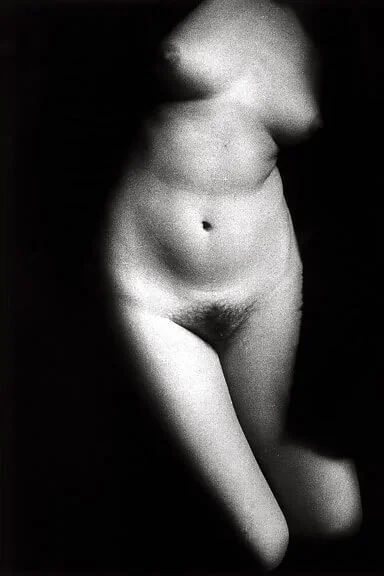Anatomy of Anatomy
What is the body in photography? For Nobuyoshi Araki, Spencer Tunick, and Ralph Gibson, very known photographers, it becomes more than an object to admire – it is a medium, a carrier of meaning, a space for dialogue between intimacy, form, and sensuality. Each of these artists explores corporeality in a different way, but they all share the ability to redefine its role in visual art.
Nobuyoshi Araki photographs the body with brutal honesty, turning it into a carrier of emotions, memories, and desires. In his works, nudity is often linked to themes of shibari – the Japanese art of bondage – where the body is subjected to tension between pain and sensuality. For Araki, the body is not just a physical presence, but also a symbol of transience and death, as seen in series such as Sentimental Journey. Here, the body becomes a deeply personal and autobiographical canvas, expressing the fleeting nature of human existence.
Spencer Tunick approaches the body from a completely different perspective. His monumental installations with hundreds of naked models in public spaces redefine intimacy. The body loses individuality, becoming an element of the landscape or an organic composition. In Tunick’s work, nudity ceases to be erotic and instead becomes a medium for illustrating the dynamic relationship between the human mass and its surroundings. His use of collective bodies emphasizes unity and the organic interplay between form and space, transforming public locations into vibrant human topographies.
Ralph Gibson, on the other hand, treats the body as an abstract object. Fragmenting its parts, he creates geometric compositions of light and shadow. Sensuality in his work emerges from rhythm and structure, rather than literal eroticism. Gibson's deconstruction of the human form invites viewers to see it anew, focusing on the interplay of lines, curves, and textures that evoke a purely visual and almost tactile experience.
In this context, "anatomy of anatomy" suggests a profound exploration of the body as both subject and tool for communication. Could be viewed as an attempt to visually deconstruct not only the body as an object but also the very process of its representation. Anatomy, as a study of structure, invites an analysis of how the body conveys emotions, desires, and abstract concepts. Araki dissects intimacy and impermanence, using the body to navigate themes of memory and loss. Tunick erases personal identity, integrating bodies into spatial compositions that challenge perceptions of individuality. Gibson’s fragmentations transform the body into a playground of geometry, where sensuality lies in formal abstraction rather than overt expression.
Ultimately, "anatomy of anatomy" is an investigation into form, emotion, and perspective. The body, both physical and photographic, becomes a versatile instrument capable of infinite interpretations. It is up to us which medium we choose for our work, but learning from this experience, we can harness these approaches to develop a deeply personal and expressive visual language.
recomendations:
Nobuyoshi Araki WIKI: https://en.wikipedia.org/wiki/Nobuyoshi_Araki
Spencer Tunick WIKI: https://en.wikipedia.org/wiki/Spencer_Tunick
Ralph Gibson Homepage: https://www.ralphgibson.com
cover photo:
Edward Weston















